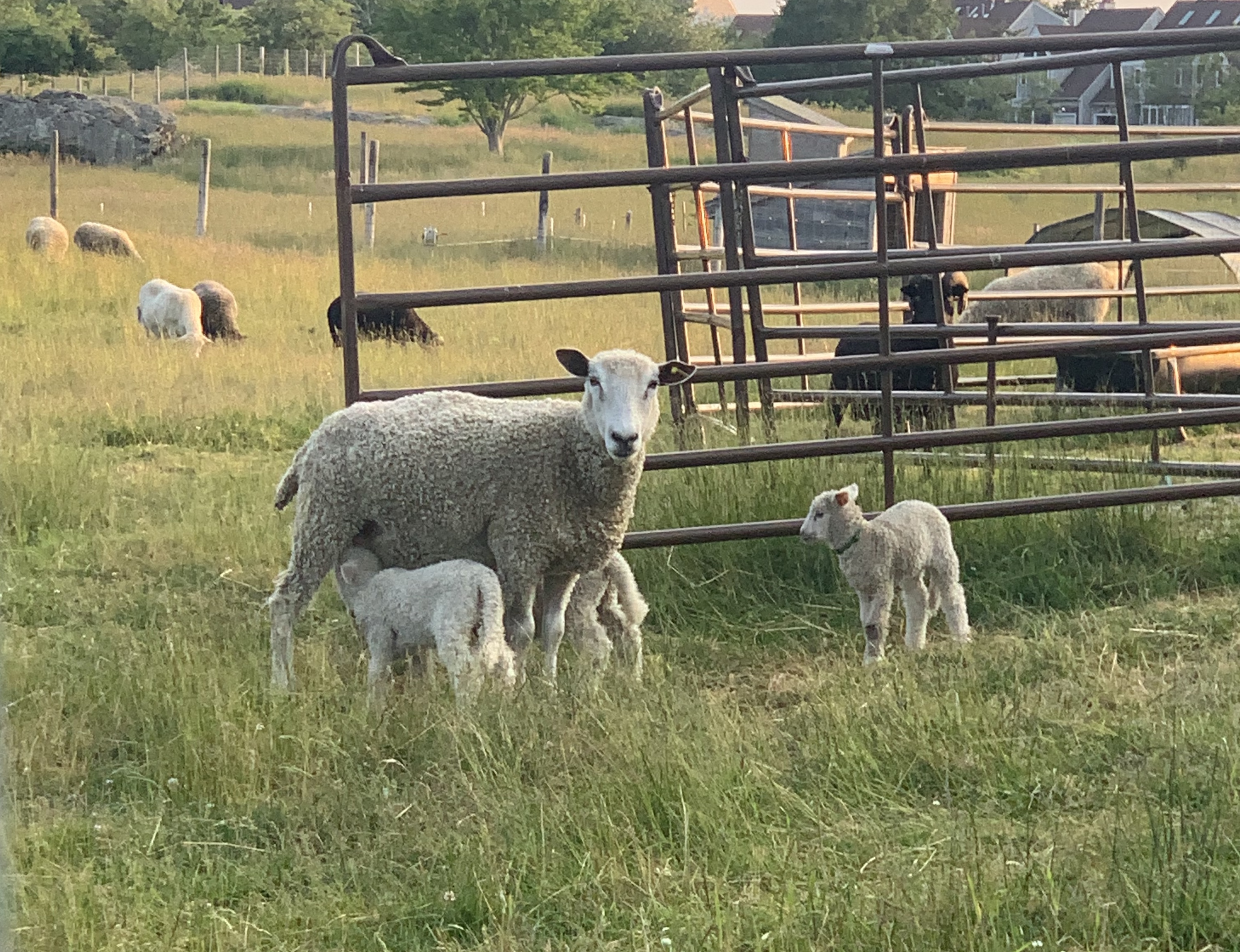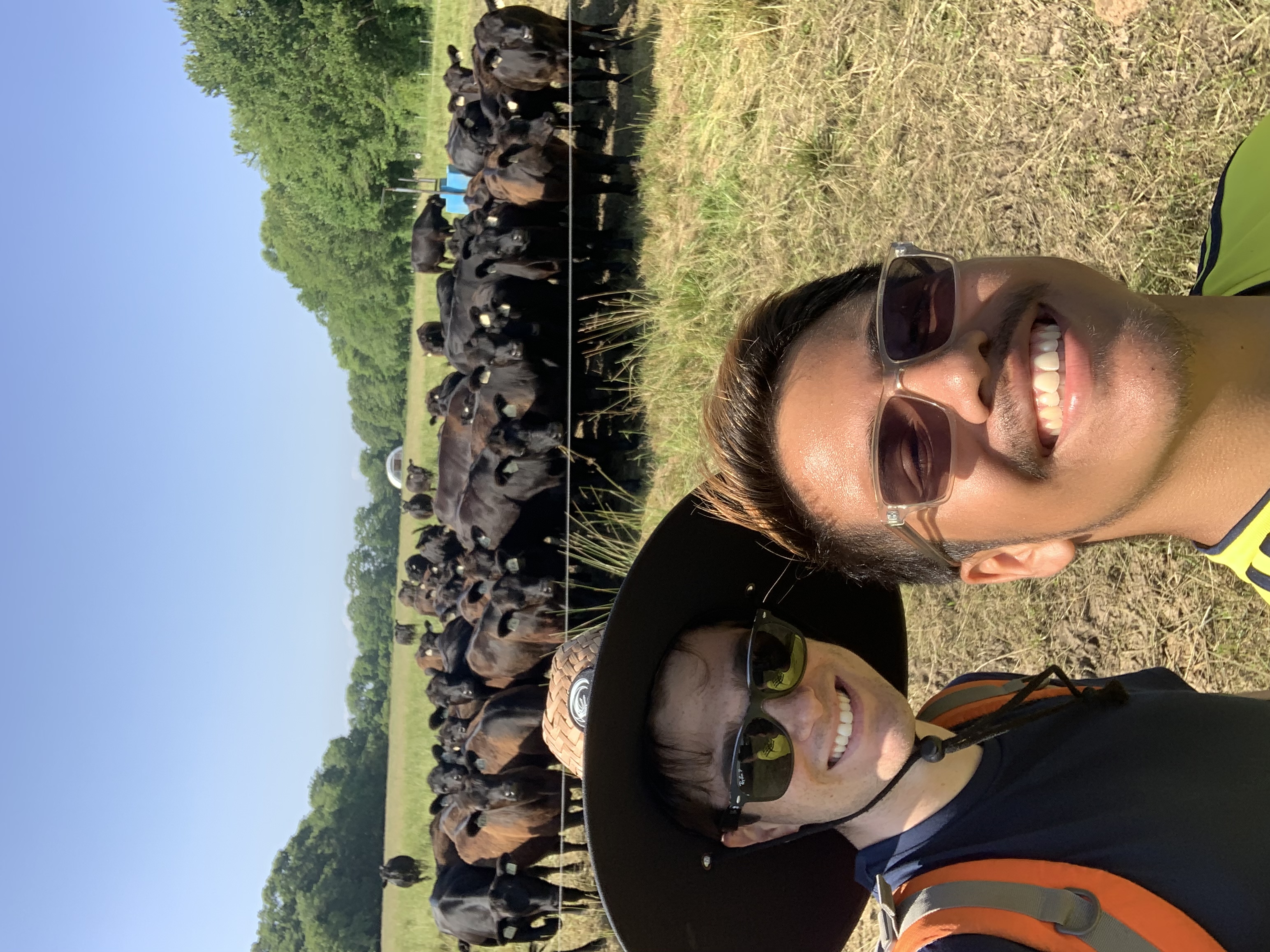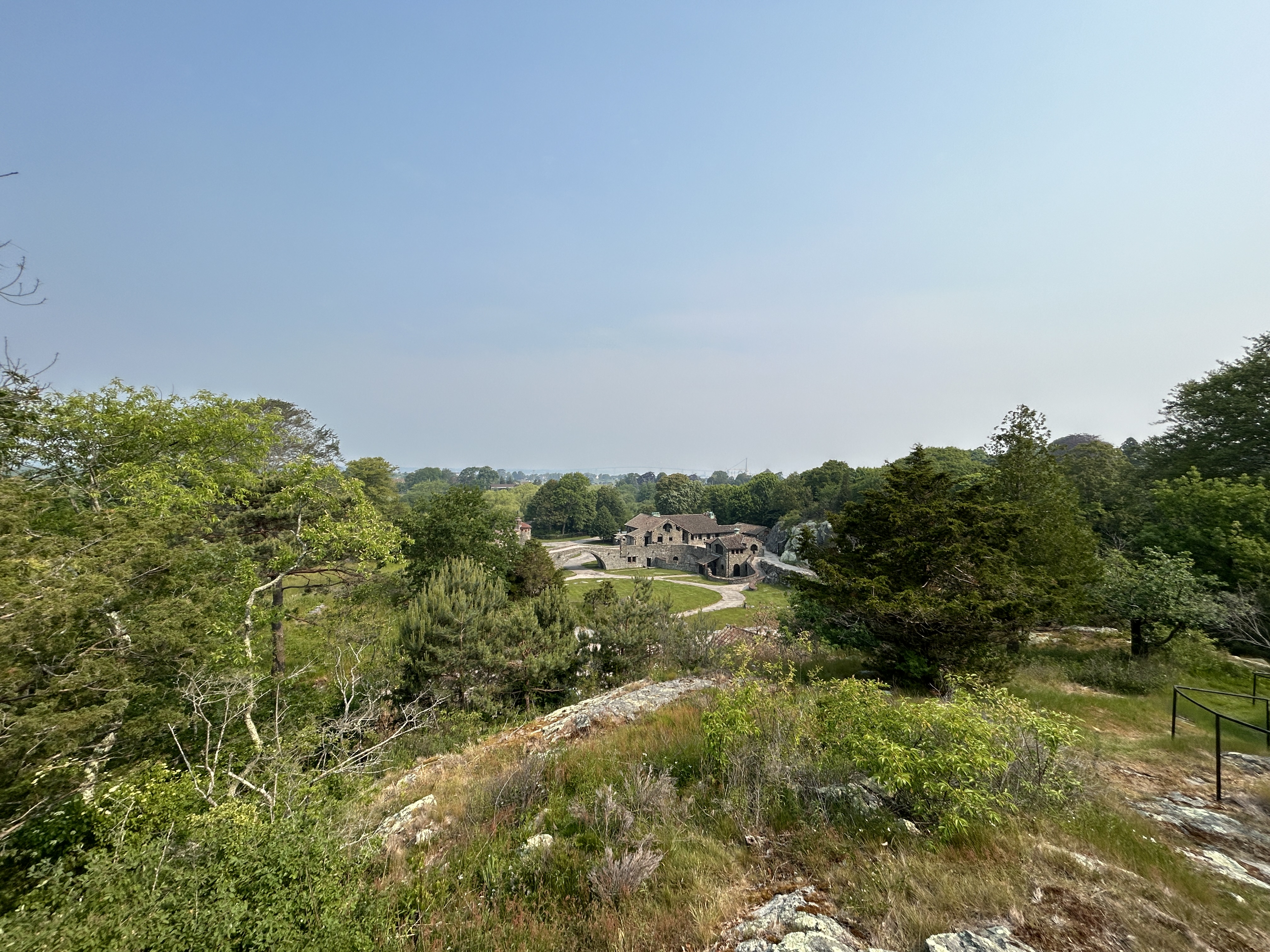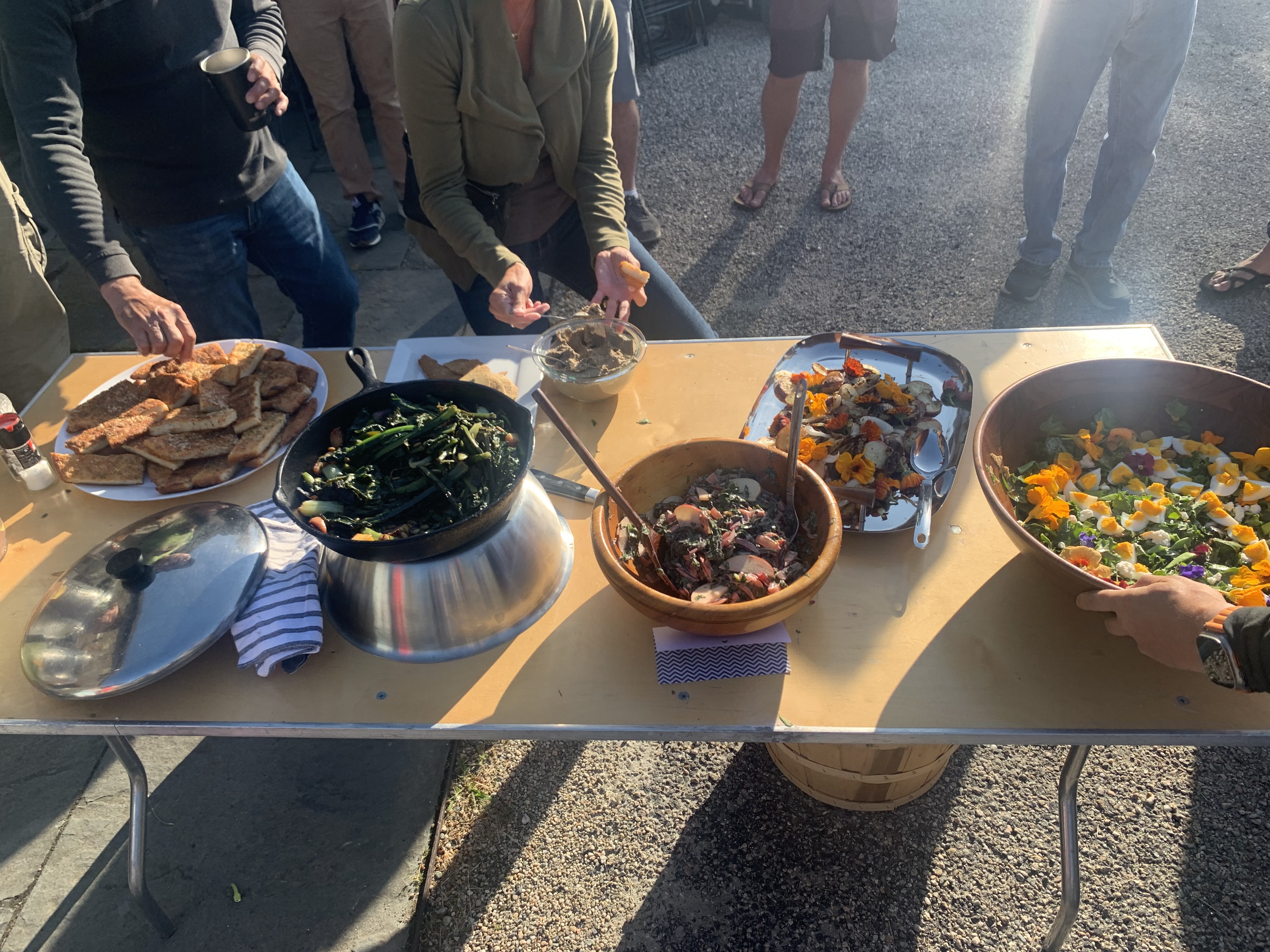
Field Reports
September 27, 2023
A Coastal Farm Measures Soil. Sampling at Ocean Hour Farm
College interns Dominick and Jonathan reflect on summer research soil sampling at Ocean Hour Farm in Newport, RI.
Written by: Dominick Catoggio and Jonathan Ramirez
I’m Dominick, an environmental science major at Skidmore College. Last semester I took Kris Covey’s Regenerative Systems class. While learning about soil science, I became aware of The Soil Inventory Project's (TSIP) internship programs. I knew this program would be a great way to get involved with fieldwork that’s closely related to my studies. I’m very grateful to Ocean Hour Farm (OHF) and TSIP for giving me this opportunity to gain hands-on experience.
I’m Jonathan, and I’m also an environmental science major at Skidmore. Last summer, I did research with a team of students and professor Karen Kellogg. We presented our research at the National Renewable Energy Lab (NREL), and it was there where I met fellow students working with TSIP. I became interested in interning with TSIP because of my already fantastic experience doing research. Needless to say, this summer did not disappoint me!

Dominick (left) and Jonathan (right) with a herd of cows
We spent the majority of our internship at** Ocean Hour Farm** in Newport, Rhode Island with additional work at neighboring farm Aquidneck Farms. Our work included collecting 285 soil samples for carbon and nitrogen analysis, as well as 68 bulk density samples across the two properties. We additionally had personal research projects and farm duties that deepened our connection to the farm and staff there. We had frequent meetings with them to discuss progress with our personal projects and worked with staff from 11th Hour Racing during weekly volunteer days to help plant new crops or remove weeds.
For the nitrogen and carbon samples, we used the TSIP sampling kit, including a battery-operated hand drill with auger attachments instead of a traditional probe. We tested a new system using a rotary hammer to collect bulk density samples. We’d collect samples by clearing away vegetation and drilling to a marked line on the attachment so we’d get a consistent amount of soil each time. Overall, the data collection went smoothly but we also had a few challenges while working in the field. The soil is shallow in many areas, and rock ledges are frequently visible from the surface. If rock gets in the way of our drill, we need to start over. This happened many times, but we were able to find clean spots almost every time. The bedrock also broke our bulk density collection device, but luckily, we were prepared for things to break. TSIP was able to swiftly get us the equipment we needed.

Rocky landscape at Ocean Hour Farm
Ocean Hour Farm serves as a center for education, scientific research, and a demonstration of regenerative agricultural practices, highlighting the critical connection between land and ocean health. We are eager to receive the data that will provide the basis of a long-term, yearly, study to determine if OHF's soil health improves as a result of their regenerative practices. A key indicator of this improvement would be an increase in soil carbon levels in previously degraded areas. In order to gain further insights, we aim to compare the data collected from OHF's soil with the data from another nearby farm, Aquidneck Farms.
In addition to our soil sampling, we were assigned a farm duty. During sunset, we helped put the chickens back into their mobile coop. In our spare time, we also helped Ocean Hour Farm educate students about biodiversity. Dom built plant presses to preserve plants that can be presented in a book or framed on the wall. Pressed plants can be stored in an herbarium, which is a collection of plants, accompanied by their location and defining characteristics. In the future, OHF can catalog all of the plants found around the property to visualize the amount of biodiversity on display. This project can help students with plant I.D. beyond the farm.
Jonathan helped the farm research ways to create a biodiversity index. The index aligned with their goal of being a center of research. OHF could use an index to keep track of biodiversity changes in the future as farming practices change. Without much background knowledge, the work consisted of reading papers and determining if different methods would work on the property. Jonathan also assisted the education program manager, Beth Alaimo, in creating lesson plans and activities to make learning environmental science fun for middle and high school students.
Other than technical matters, we were also very lucky that the folks at both locations were very welcoming, and we immediately felt like a part of the team. One of our favorite community events was the celebration of the summer solstice. Everyone from OHF contributed to making a large dinner with farm fresh produce and pastured chicken. We were split into teams and gathered ingredients from the farm to create a unique side dish. The food turned out amazing and we got to see firsthand just how tight knit the community is.

Spread of food from the summer solstice dinner
We frequently visited the office (referred to as the Milk Barn) to give updates on our progress, and ask questions. This aided us in our scheduling, so we could budget our time effectively. Our schedule was always subject to change, which encouraged us to make quick decisions. For example, when our bulk density equipment broke, we quickly pivoted to a new method of data collection with the help of TSIP. The amount of collaboration that goes into each job at both Ocean Hour Farm, and TSIP is inspiring and something we will take away from this experience.
Sonali Lamba